Reassessment of the Matrix Composition of Co-Re-Cr-Based Alloys for Particle Strengthening in High-Temperature Applications and Investigation of Suitable MC-Carbides
Abstract
1. Introduction
2. Materials and Experiments
3. Results
3.1. As-Cast Microstructure of Co-Re-Cr, Co-Re-Cr-Ta-C, Co-Re-Cr-Ti-C, and Co-Re-Cr-Hf-C
3.2. Solution Treated and Aged Microstructure of Co-Re-Cr-Ta-C, Co-Re-Cr-Ti-C and Co-Re-Cr-Hf-C
3.3. Influence of Re and Cr on the Microstructure and Precipitation in Co-Re-Cr, Co-Re-Cr-Ta-C and Co-Re-Cr-Ti-C
3.4. Solubility of TaC and TiC in Co-Re-Cr
4. Discussion
4.1. As-Cast Microstructure of Co-Re-Cr, Co-Re-Cr-Ta-C, Co-Re-Cr-Ti-C and Co-Re-Cr-Hf-C
4.2. Solution Treated and Aged Microstructure of Co-Re-Cr-Ta-C, Co-Re-Cr-Ti-C and Co-Re-Cr-Hf-C
4.3. Influence of Re and Cr on the Microstructure and Precipitation in Co-Re-Cr, Co-Re-Cr-Ta-C and Co-Re-Cr-Ti-C
4.4. Solubility of TaC and TiC in Co-Re-Cr
5. Conclusions
Author Contributions
Funding
Data Availability Statement
Acknowledgments
Conflicts of Interest
References
- Perepezko, J.H. The hotter the engine, the better. Science 2009, 326, 1068–1069. [Google Scholar] [CrossRef]
- Clarke, D.R.; Oechsner, M.; Padture, N.P. Thermal-barrier coatings for more efficient gas-turbine engines. MRS Bull. 2012, 37, 891–898. [Google Scholar] [CrossRef]
- Rösler, J.; Mukherji, D.; Baranski, T. Co-Re-based Alloys: A New Class of High Temperature Materials? Adv. Eng. Mater. 2007, 9, 876–881. [Google Scholar] [CrossRef]
- Heilmaier, M.; Krüger, M.; Saage, H.; Rösler, J.; Mukherji, D.; Glatzel, U.; Völkl, R.; Hüttner, R.; Eggeler, G.; Somsen, C.; et al. Metallic materials for structural applications beyond nickel-based superalloys. JOM 2009, 61, 61–67. [Google Scholar] [CrossRef]
- Rehman, H.U. Solid Solution Strengthening and Diffusion in Nickel- and Cobalt-Based Superalloys. Ph.D. Thesis, Friedrich-Alexander-Universität Erlangen-Nürnberg, Erlangen, Germany, 2016. [Google Scholar]
- American Society for Metals. Binary Alloy Phase Diagrams; ASM International: Materials Park, OH, USA, 1990; ISBN 978-0-87170-403-0. [Google Scholar]
- Kassner, M.E. Fundamentals of Creep in Materials, 3rd ed.; Butterworth-Heinemann: Amsterdam, The Netherlands, 2014; ISBN 978-0-08-099427-7. [Google Scholar]
- Dörries, K.; Mukherji, D.; Rösler, J.; Esleben, K.; Gorr, B.; Christ, H.-J. Influence of σ Phase on the Allotropic Transformation of the Matrix in Co-Re-Cr-Based Alloys with Ni Addition. Metals 2018, 8, 706. [Google Scholar] [CrossRef]
- Brunner, M.; Hüttner, R.; Bölitz, M.-C.; Völkl, R.; Mukherji, D.; Rösler, J.; Depka, T.; Somsen, C.; Eggeler, G.; Glatzel, U. Creep properties beyond 1100 °C and microstructure of Co–Re–Cr alloys. Mater. Sci. Eng. A 2010, 528, 650–656. [Google Scholar] [CrossRef]
- Depka, T.; Somsen, C.; Eggeler, G.; Mukherji, D.; Rösler, J. Sigma phase evolution in Co–Re–Cr-based alloys at 1100 °C. Intermetallics 2014, 48, 54–61. [Google Scholar] [CrossRef]
- Mukherji, D.; Gilles, R.; Karge, L.; Strunz, P.; Beran, P.; Eckerlebe, H.; Stark, A.; Szentmiklosi, L.; Mácsik, Z.; Schumacher, G.; et al. Neutron and synchrotron probes in the development of Co–Re-based alloys for next generation gas turbines with an emphasis on the influence of boron additives. J. Appl. Crystallogr. 2014, 47, 1417–1430. [Google Scholar] [CrossRef]
- Wanderka, N.; Mousa, M.S.; Henke, P.; Korchuganova, O.; Mukherji, D.; Rösler, J.; Banhart, J. Carbides in Co–Re–Cr-based high-temperature alloys. J. Mater. Sci. 2016, 51, 7145–7155. [Google Scholar] [CrossRef]
- Mukherji, D.; Gilles, R.; Strunz, P.; Karge, L. Current status of Co-Re-based alloys being developed to supplement Ni-based superalloys for ultra-high temperature applications in gas turbines. Kov. Mater. 2015, 53, 287–294. [Google Scholar] [CrossRef]
- Gilles, R.; Mukherji, D.; Karge, L.; Strunz, P.; Beran, P.; Barbier, B.; Kriele, A.; Hofmann, M.; Eckerlebe, H.; Rösler, J. Stability of TaC precipitates in a Co–Re-based alloy being developed for ultra-high-temperature applications. J. Appl. Crystallogr. 2016, 49, 1253–1265. [Google Scholar] [CrossRef]
- Karge, L.; Gilles, R.; Mukherji, D.; Strunz, P.; Beran, P.; Hofmann, M.; Gavilano, J.; Keiderling, U.; Dolotko, O.; Kriele, A.; et al. The influence of C/Ta ratio on TaC precipitates in Co-Re base alloys investigated by small-angle neutron scattering. Acta Mater. 2017, 132, 354–366. [Google Scholar] [CrossRef]
- Karge, L.; Gilles, R.; Hofmann, M.; Mukherji, D.; Rösler, J.; Honecker, D.; Beran, P.; Strunz, P.; Schell, N.; Busch, S. TaC Precipitation Kinetics During Cooling of Co−Re-Based Alloys. Adv. Eng. Mater. 2021, 23, 2100129. [Google Scholar] [CrossRef]
- Beran, P.; Mukherji, D.; Strunz, P.; Gilles, R.; Hofmann, M.; Karge, L.; Dolotko, O.; Rösler, J. Effect of composition on the matrix transformation of the Co-Re-Cr-Ta-C alloys. Met. Mater. Int. 2016, 22, 562–571. [Google Scholar] [CrossRef]
- Karge, L. Co-Re Alloys for Ultra-high Temperature Applications—Investigated by In-situ Neutron Scattering and Complementary Methods. Ph.D. Thesis, Technische Universität München, München, Germany, 2018. [Google Scholar]
- Berthod, P. Looking for New Polycrystalline MC-Reinforced Cobalt-Based Superalloys Candidate to Applications at 1200 °C. Adv. Mater. Sci. Eng. 2017, 2017, 4145369. [Google Scholar] [CrossRef]
- Okamoto, H. Co-Zr (Cobalt-Zirconium). J. Phase Equilib. Diffus. 2011, 32, 169–170. [Google Scholar] [CrossRef]
- Rösler, J.; Joos, R.; Arzt, E. Microstructure and creep properties of dispersion-strengthened aluminum alloys. Metall. Trans. A 1992, 23, 1393–1521. [Google Scholar] [CrossRef]
- Villars, P. Pearson’s Handbook: Crystallographic Data for Intermetallic Phases; Pearson’s Handbook-Desk Edition; ASTM International: Materials Park, OH, USA, 1997; ISBN 0871706032. [Google Scholar]
- Ishida, K.; Nishizawa, T. The Co-Hf (Cobalt-Hafnium) system. J. Phase Equilibria 1991, 12, 424–427. [Google Scholar] [CrossRef]
- Murray, J.L. The Co-Ti (Cobalt−Titanium) system. J. Phase Equilibria 1982, 3, 74–85. [Google Scholar] [CrossRef]
- Paulisch, M.C.; Wanderka, N.; Miehe, G.; Mukherji, D.; Rösler, J.; Banhart, J. Characterization of borides in Co–Re–Cr-based high-temperature alloys. J. Alloys Compd. 2013, 569, 82–87. [Google Scholar] [CrossRef]
- Esleben, K.; Gorr, B.; Christ, H.-J.; Pritzel, C.; Mukherji, D.; Rösler, J.; Beran, P.; Strunz, P.; Hoelzel, M.; Gilles, R. Effect of Cr and Ni on the microstructural evolution in Co–Re–Cr–Ni alloys. Int. J. Mater. Res. 2019, 110, 1092–1104. [Google Scholar] [CrossRef]
- Sims, C.T. High-Temperature Materials for Aerospace and Industrial Power; Wiley: New York, NY, USA, 1987; ISBN 9780471011477. [Google Scholar]
- Bandyopadhyay, D.; Sharma, R.C.; Chakraborti, N. The Ti-Co-C system (titanium-cobalt-carbon). J. Phase Equilibria 2000, 21, 179–185. [Google Scholar] [CrossRef]
- Ishida, K.; Nishizawa, T. The C-Co(Carbon-Cobalt) system. J. Phase Equilibria 1991, 12, 417–424. [Google Scholar] [CrossRef]
- Gupta, K.P. The Co-Cr-Ta (Cobalt-Chromium-Tantalum) System. J. Phase Equilibria Diffus. 2005, 26, 93–97. [Google Scholar] [CrossRef]
- Gupta, K.P. The Co-Cr-Ti system (cobalt-chromium-titanium). J. Phase Equilibria 2001, 22, 52–60. [Google Scholar] [CrossRef]
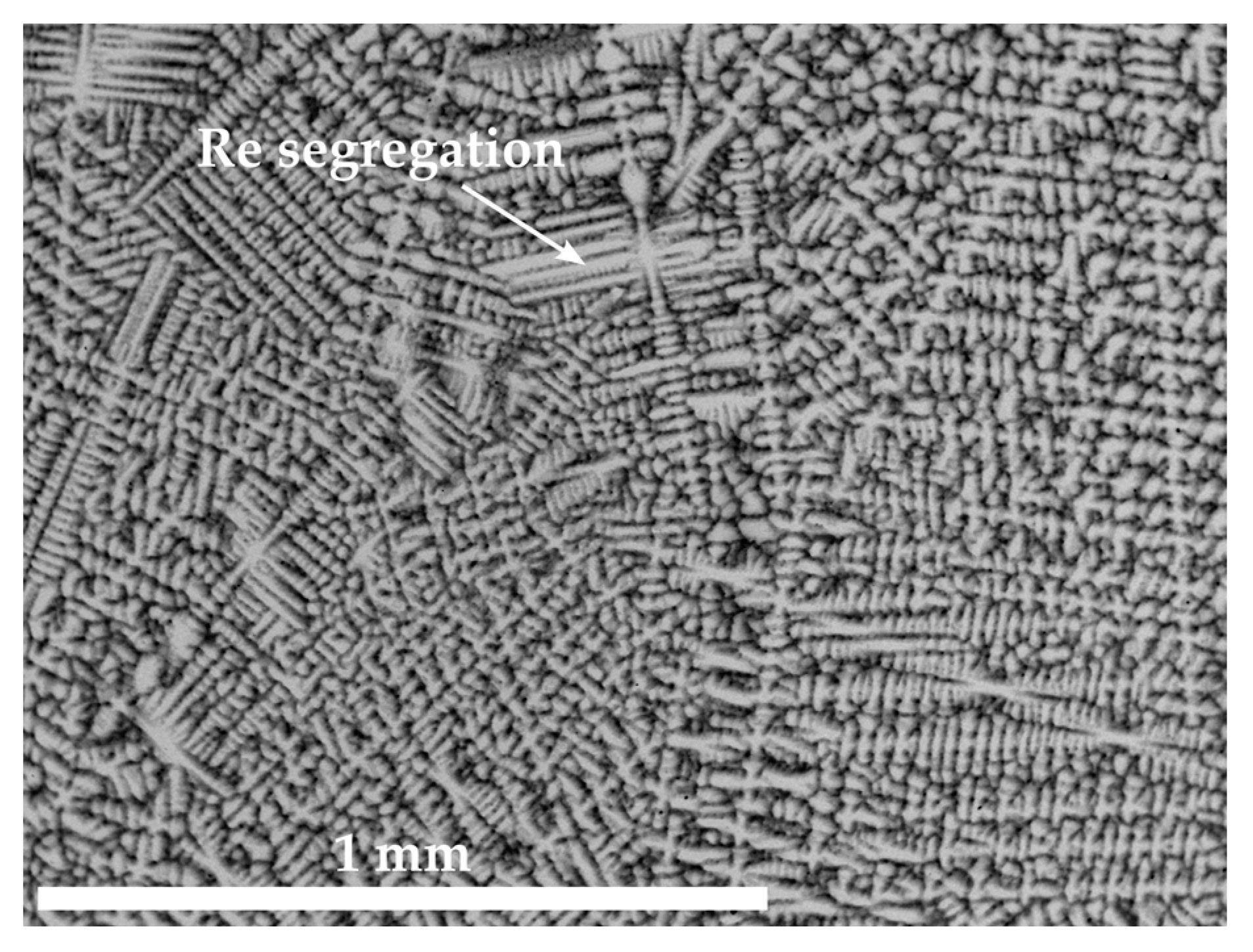
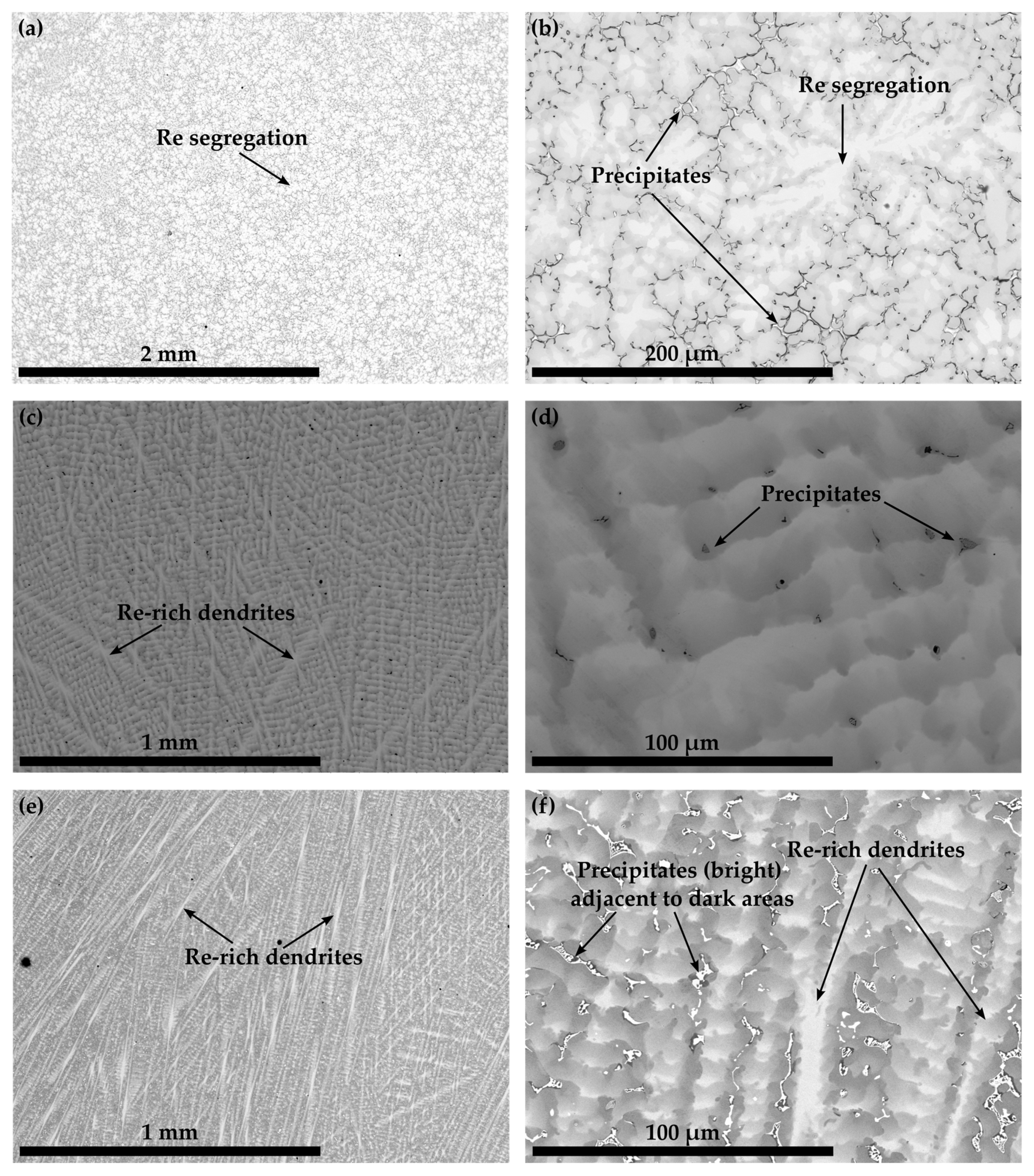

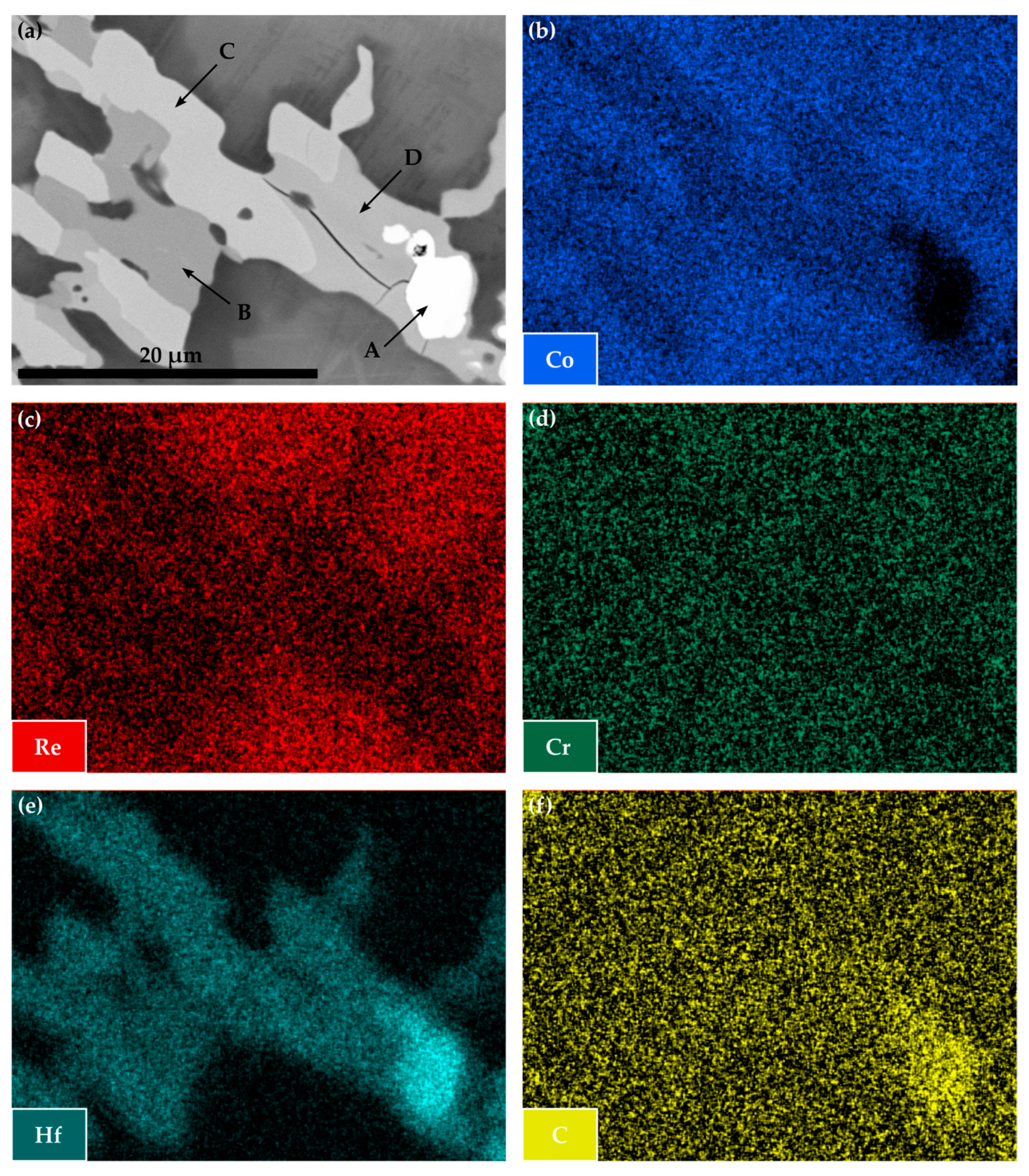
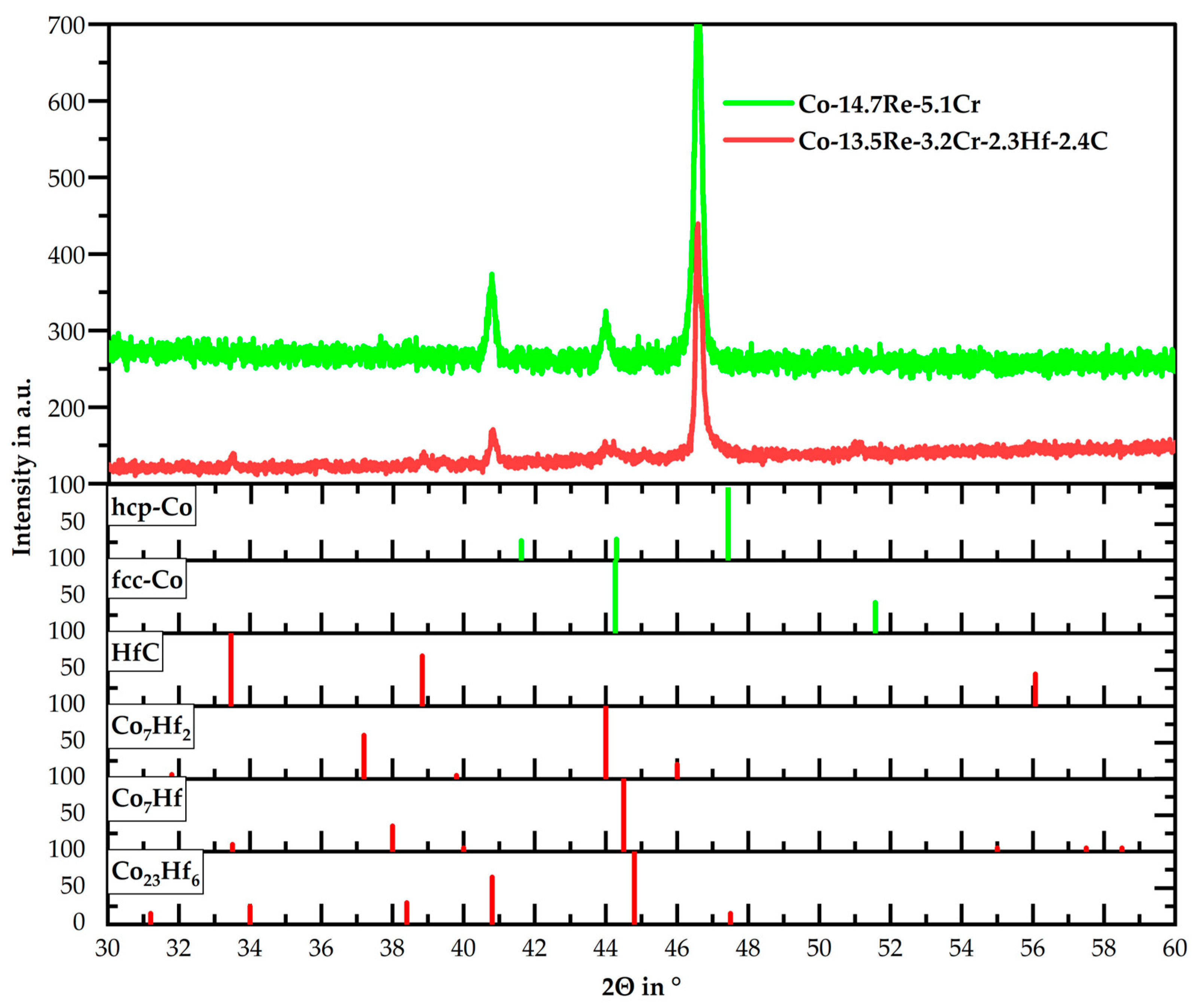
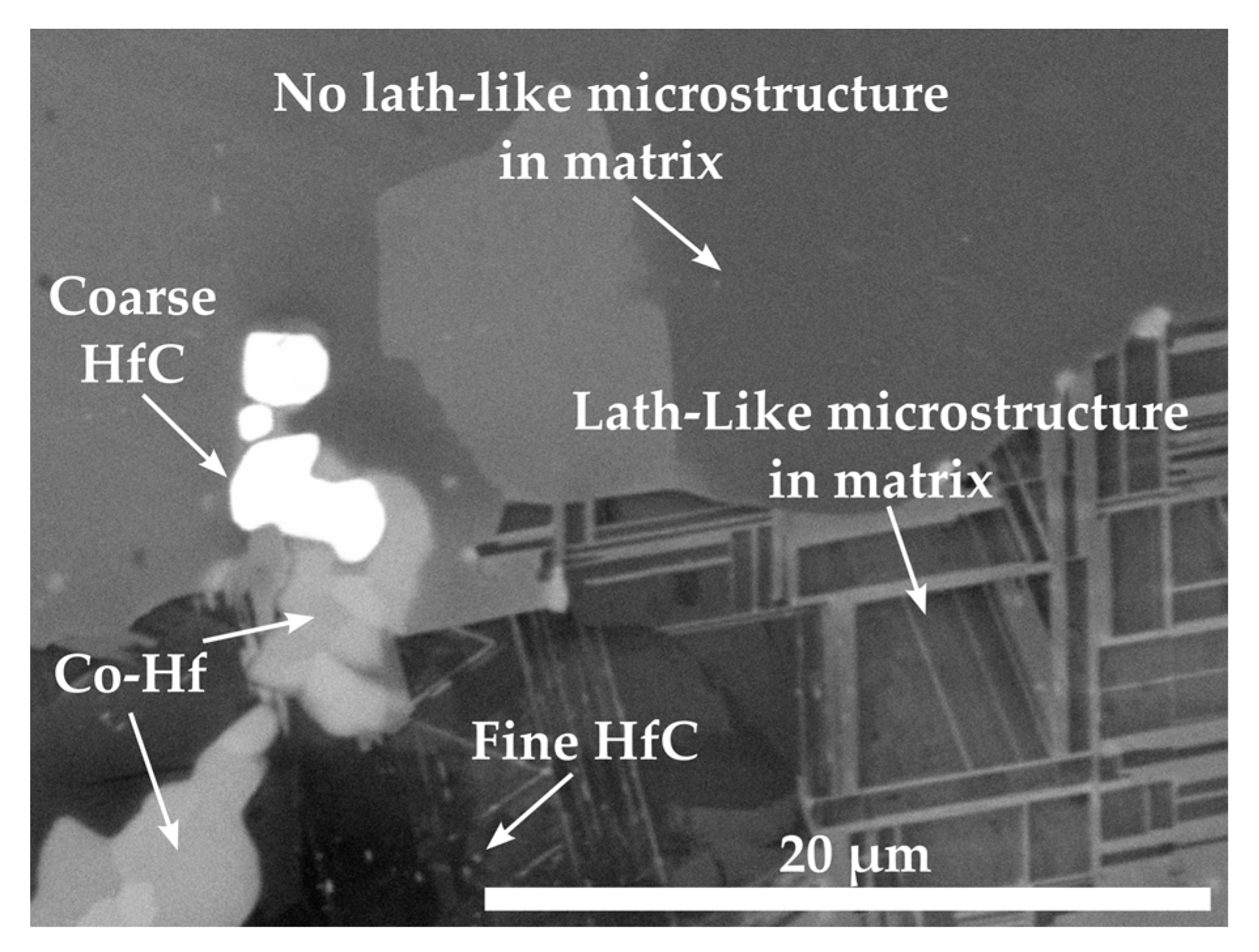
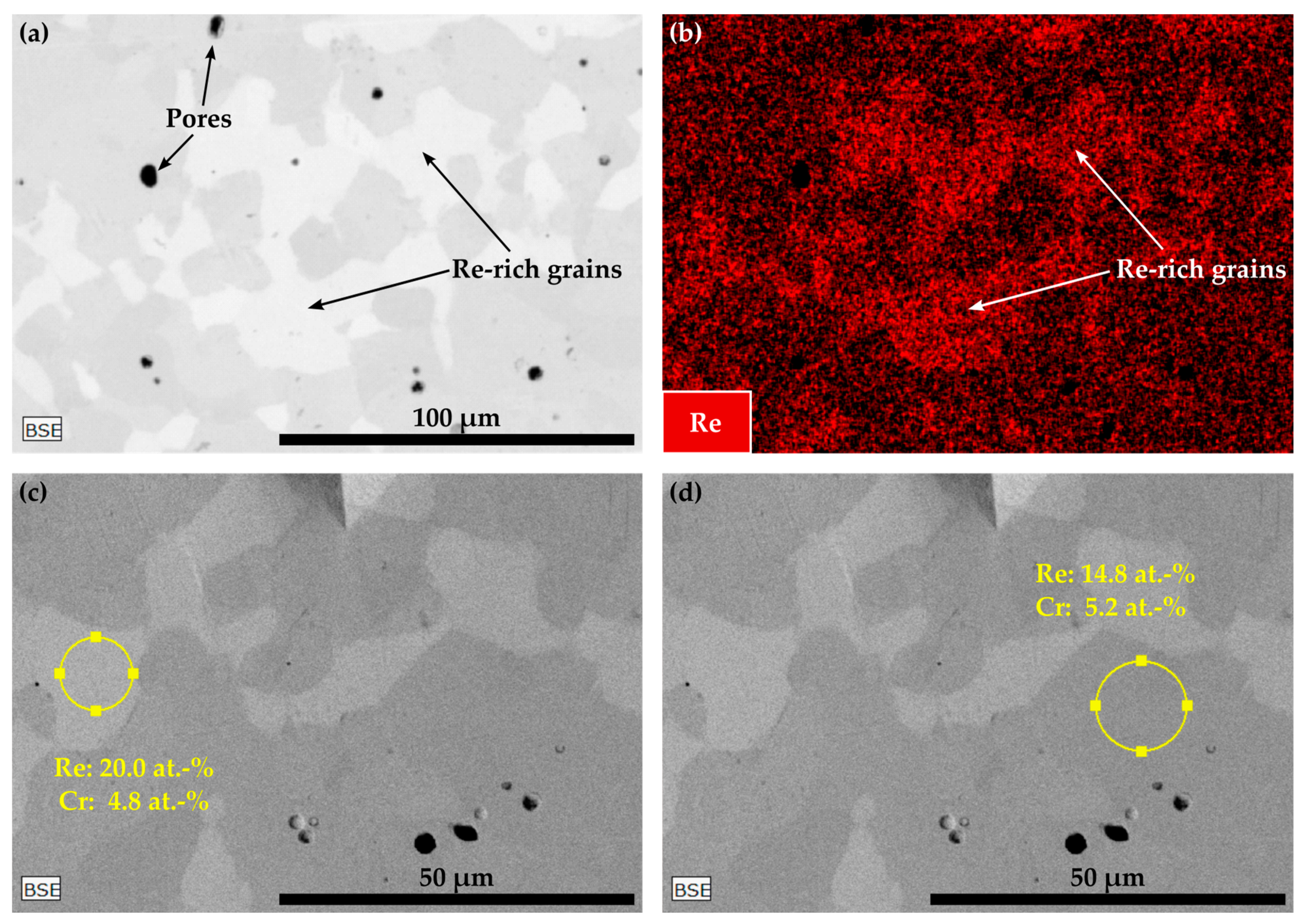

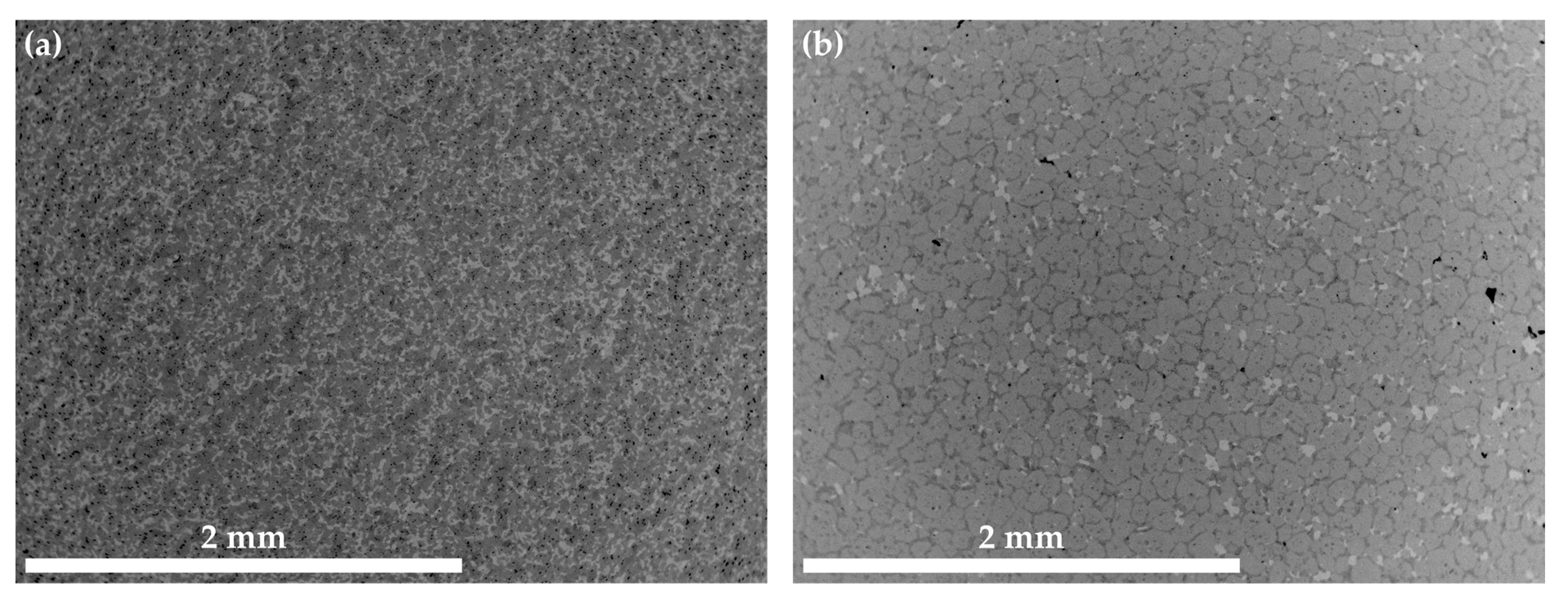
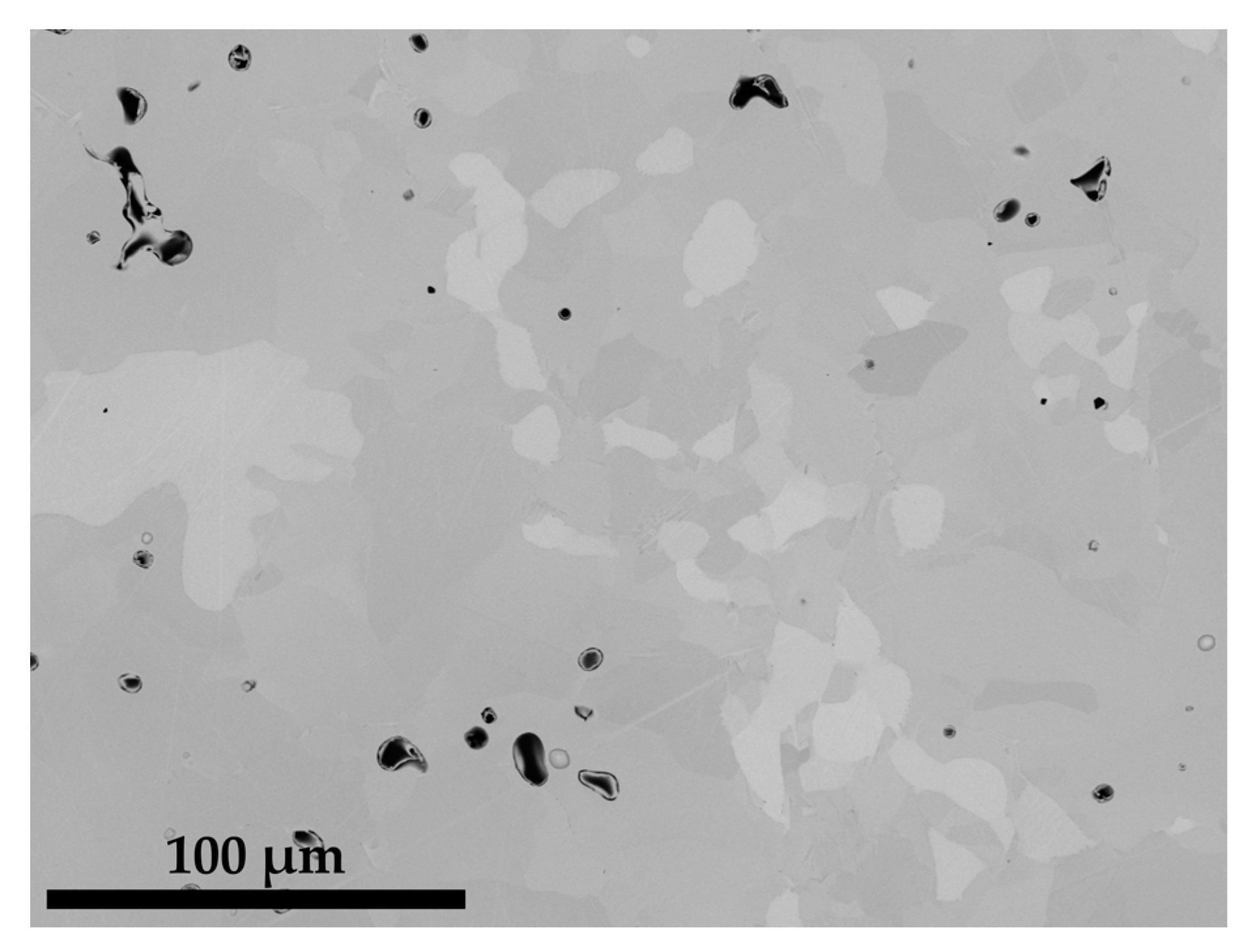
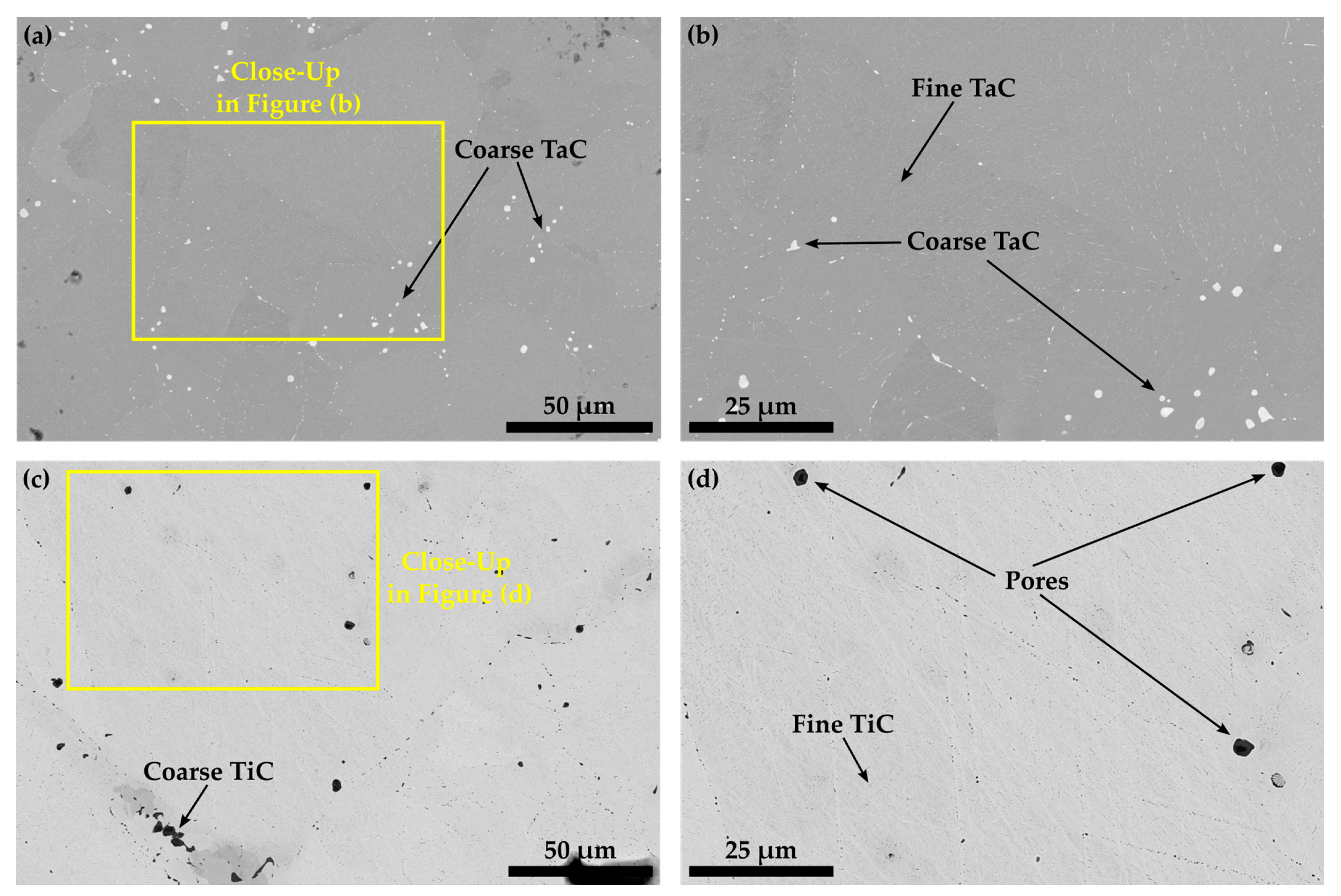

| Co [at.%] | Hf [at.%] | Co [at.%] | Hf [at.%] | ||
|---|---|---|---|---|---|
| B | 82.5 | 17.5 | Co7Hf | 87.5 | 12.5 |
| C | 79.4 | 20.6 | Co23Hf6 | 79.3 | 20.7 |
| D | 78.4 | 21.6 | Co7Hf2 | 77.8 | 22.2 |
Disclaimer/Publisher’s Note: The statements, opinions and data contained in all publications are solely those of the individual author(s) and contributor(s) and not of MDPI and/or the editor(s). MDPI and/or the editor(s) disclaim responsibility for any injury to people or property resulting from any ideas, methods, instructions or products referred to in the content. |
© 2023 by the authors. Licensee MDPI, Basel, Switzerland. This article is an open access article distributed under the terms and conditions of the Creative Commons Attribution (CC BY) license (https://creativecommons.org/licenses/by/4.0/).
Share and Cite
Seif, E.; Rösler, J. Reassessment of the Matrix Composition of Co-Re-Cr-Based Alloys for Particle Strengthening in High-Temperature Applications and Investigation of Suitable MC-Carbides. Materials 2023, 16, 4443. https://doi.org/10.3390/ma16124443
Seif E, Rösler J. Reassessment of the Matrix Composition of Co-Re-Cr-Based Alloys for Particle Strengthening in High-Temperature Applications and Investigation of Suitable MC-Carbides. Materials. 2023; 16(12):4443. https://doi.org/10.3390/ma16124443
Chicago/Turabian StyleSeif, Eugen, and Joachim Rösler. 2023. "Reassessment of the Matrix Composition of Co-Re-Cr-Based Alloys for Particle Strengthening in High-Temperature Applications and Investigation of Suitable MC-Carbides" Materials 16, no. 12: 4443. https://doi.org/10.3390/ma16124443
APA StyleSeif, E., & Rösler, J. (2023). Reassessment of the Matrix Composition of Co-Re-Cr-Based Alloys for Particle Strengthening in High-Temperature Applications and Investigation of Suitable MC-Carbides. Materials, 16(12), 4443. https://doi.org/10.3390/ma16124443





